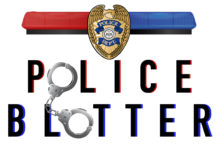SRU’S President’s Commission for Gender Identity and Expression and Sexual Orientation, better known as GIESO, established a new campaign about intersectionality as part of LGBTQ+ history month.
The hashtag for this campaign is “#IntersectionalitySru” and can be seen on lawn signs in the quad and on GIESO’s social media accounts, @srugieso.
Vanessa Vought, co-chair of GIESO, said that the lawn signs are highlighting the different intersections within the LGBTQ+ community.
“We are recognizing that population isn’t homogenous and there is a variation and a lot of diversity inside the category alone,” Vought said. “There are different issues that come up at different intersections, hence the name ‘intersectionality.’”
Emily Keener, a GIESO member, said that she likes to describe the intersections as a kaleidoscope.
“Every time you turn a kaleidoscope, the image changes, so if you took everything about you and changed one aspect of your identity, whether it is education, socioeconomic status, race, age or anything, that really changes your life,” Keener said.
Vought said GIESO typically sponsors the Pride Banners on campus, which are currently in place, but this year they added the intersectionality lawn signs. The signs include many popular slogans for other movements such as “All black LGBTQ+ lives matter” and “No LGBTQ+ human is illegal.”
“We took these popular slogans and just added LGBTQ+ to them because it shows that within these movements there are also other types of oppression,” Vought said.
She said that using these slogans shows their solidarity to these other movements as well.
“We are trying to show that all oppression is connected and that we support your movement,” Vought said.
She said that this is also a social media campaign that encourages different departments to use the hashtag to show where their group, population or identity comes into play.
“We had a post on Twitter from the President’s Commission on Disability on how they showed an intersection of disability and LGBTQ because that’s a completely different experience,” Vought said.
Keener also shared the example that people from other countries may have been more or less accepted for their sexual orientation before coming to the United States.
“That comes with another bag of problems or privileges, and so does living in a rural versus urban area,” Keener said.
Keener said working together solves a lot of intersectionality issues.
“We don’t know how much power we have until we work together,” she said. “People work separately on environmental issues, women’s issues and LGBTQ issues, where the system of power that is causing oppression is the same across all of these groups.”
On the other hand, Keener said that intersectionality movements can be hard and messy.
“You have to do it in a way where you aren’t pitting one group against another,” she said. “One group’s problems can’t be more of a problem or priority.”
She also said that some people are committed to one movement but not to another. An example she gave was that woman of color are not always for the traditional feminist movement.
“There are historical reasons why groups may not work together,” Keener said. “Activism is hard.”
Vought and Keener both said that they encourage students to participate in the campaign by using the hashtag, #IntersectionalitySRU.
There is also a study that they encouraged all students to participate in.
“There is a share study looking at relationships in health and wellness,” Keener said. “We need all types of relationships to be represented in the research, whether that is interracial, same-sex, relationships with big age gaps or people who are not in relationships.”
She said that in order for the research to be valid and meaningful to help the SRU community improve the climate and resources for different groups on campus, diverse communities need to actually participate.
Students can be included in this research by finding it on GIESO’s social media or by following the link, http://go.ecu.edu/shareSRU. This study runs until the end of October.









